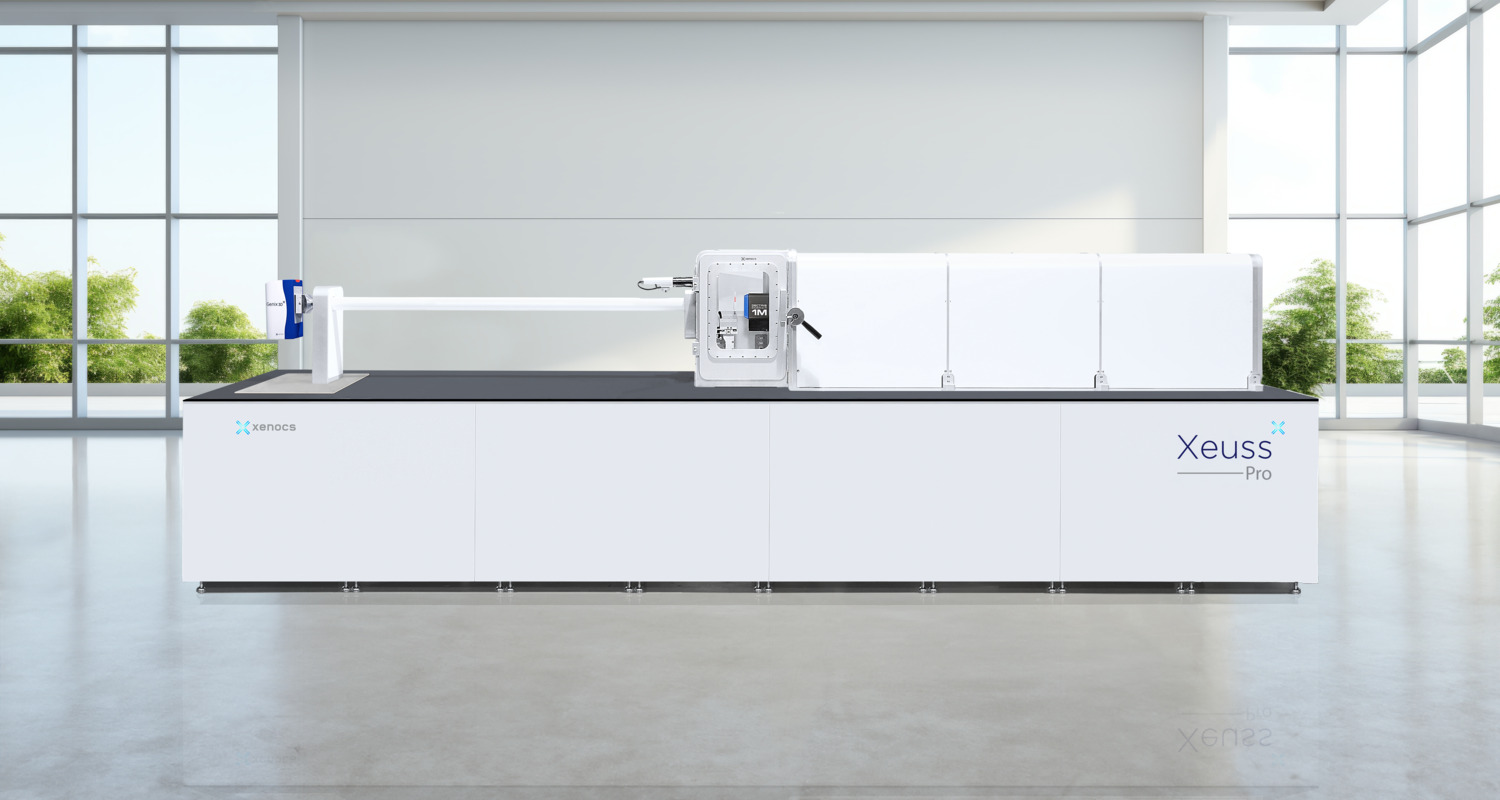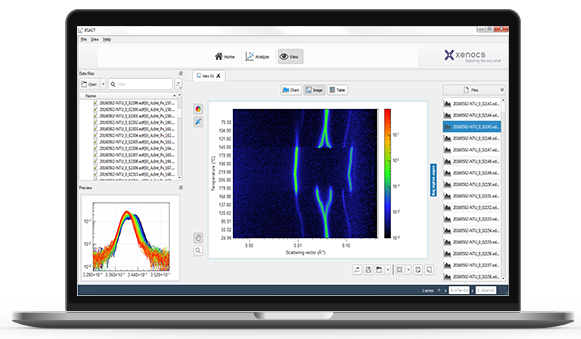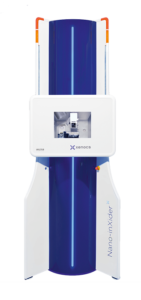Phase identification
Phase identification,
what is measured?
The measurement identifies whether a specific phase is present in the sample.
Confirmation of a structural hypothesis is done by confronting the expected Bragg peaks (in terms of Q positions and intensities) to the X-ray scattering data. It also provides a quick access to the corresponding unit cell parameters.
Typical phases are: lamellar, hexagonal, cubic…
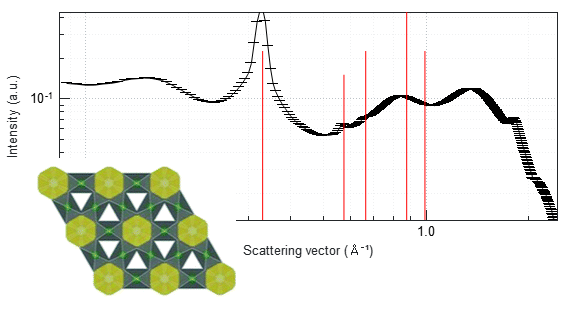
Figure 1. Identification of a hexagonal 2D supperlattice.
Reference: García‐Iglesias, M. , de Waal, B. F., de Feijter, I. , Palmans, A. R. and Meijer, E. W. (2015), Nanopatterned Superlattices in Self‐Assembled C2‐Symmetric Oligodimethylsiloxane‐Based Benzene‐1,3,5‐Tricarboxamides. Chem. Eur. J., 21: 377-385. doi: 10.1002/chem.201404375)
Samples
Typical samples for this measurement are:
-
Micelles
-
Block copolymer systems in all forms
-
Liquid crystals
-
Powders
-
Nanostructured solids
Methods & standards
Standards & methods used for phase identification:
-
International Tables of Crystallography https://it.iucr.org/
XSACT analysis software implements the above method.
Why use SAXS for phase identification?
Advantages of SAXS for phase identification:
-
SAXS measurements are suitable for in situ and/or operando conditions
-
SAXS allows to follow direct phase transformation
-
It accurately reveals the evolution of phases as a function of external parameters such as temperature, reaction time or shear.
Examples of customer publications making use of phase analysis and evolution studies as a function of temperature:
- Abe, Y. et al. “Unique Reversible Crystal-to-Crystal Phase Transition—Structural and Functional Properties of Fused Ladder Thienoarenes“. Chemistry of Materials, vol 29, 18, pp. 7686-7696 (2017).
- Lokupitiya, H.N. et al. ” Ordered Mesoporous to Macroporous Oxides with Tunable Isomorphic Architectures: Solution Criteria for Persistent Micelle Templates “. Chemistry of Materials, vol 28, 6, pp. 1653-1667 (2016)
- Liao, F. et al. “Self-assembly of a silicon-containing side-chain liquid crystalline block copolymer in bulk and in thin films: kinetic pathway of a cylinder to sphere transition”. Nanoscale, 11, pp. 285-293 (2019)
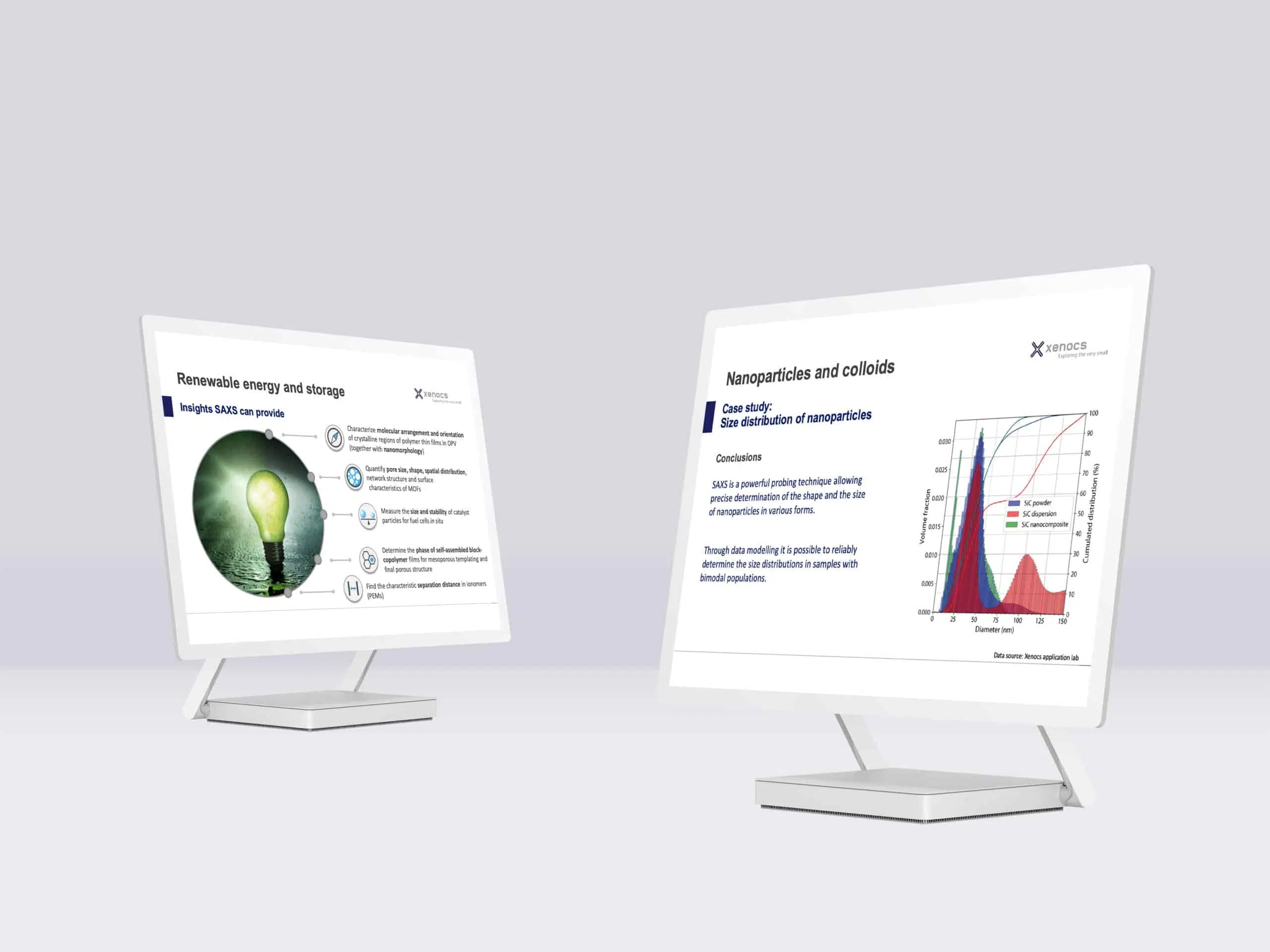
Products
All these measurements are possible directly in your lab.
Xeuss Pro
The Ultimate Solution for Nanoscale Characterization using SAXS/WAXS/GISAXS/USAXS/Imaging
